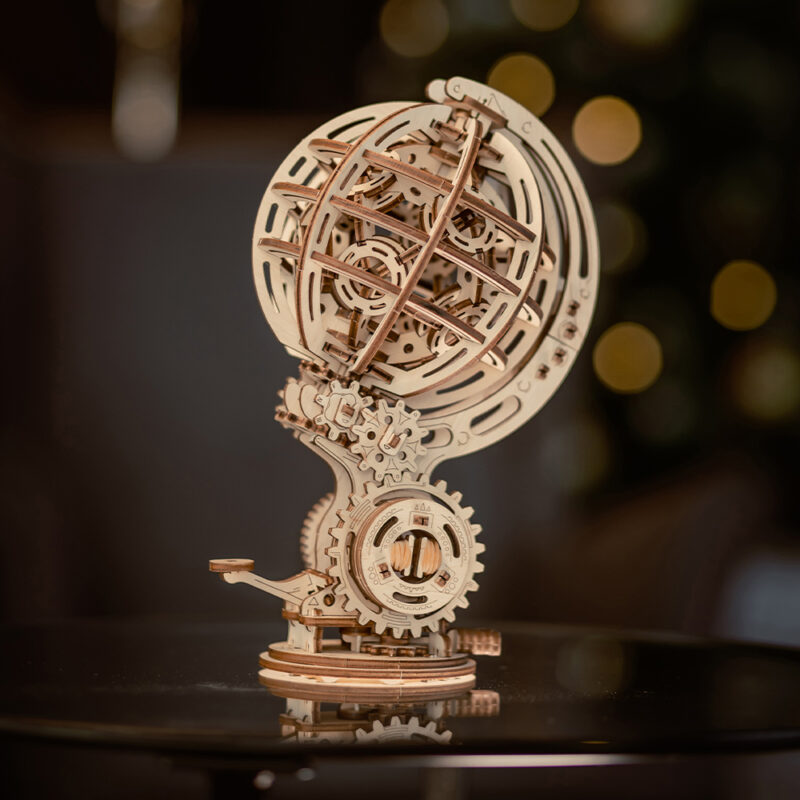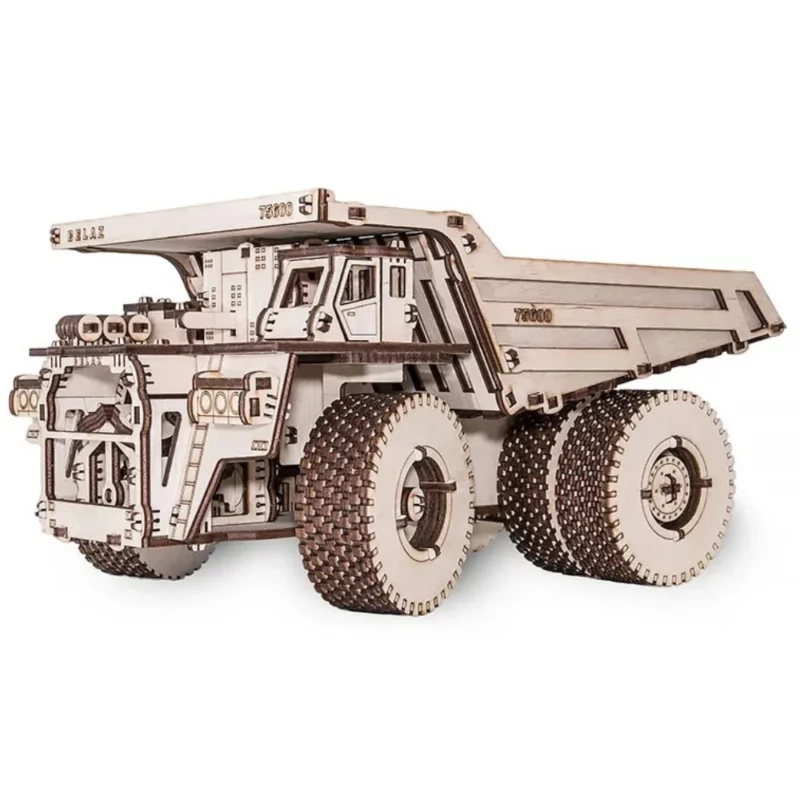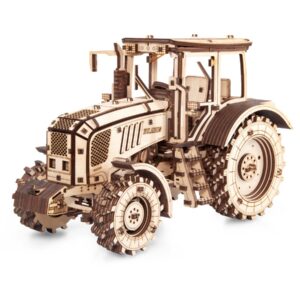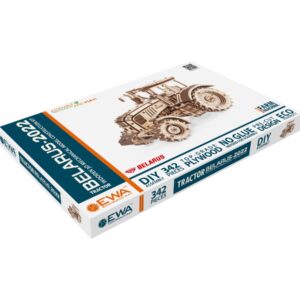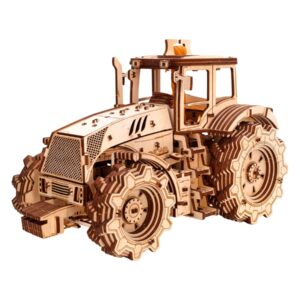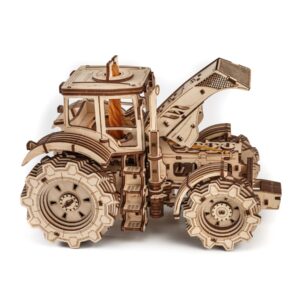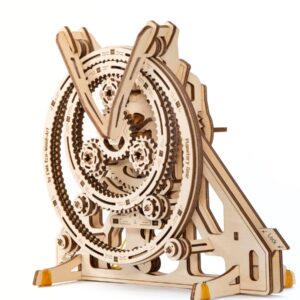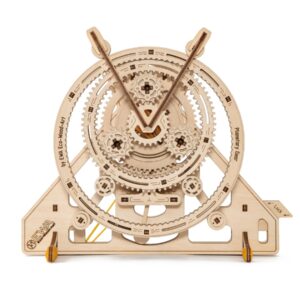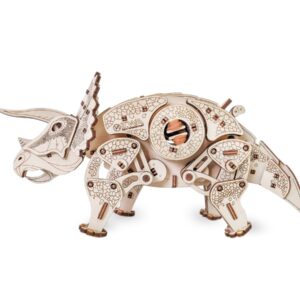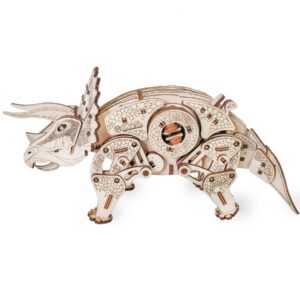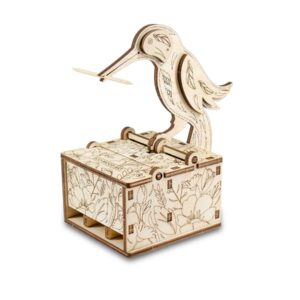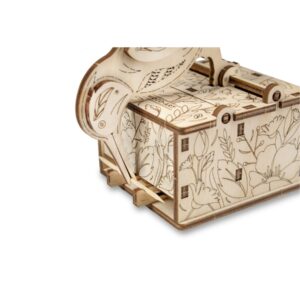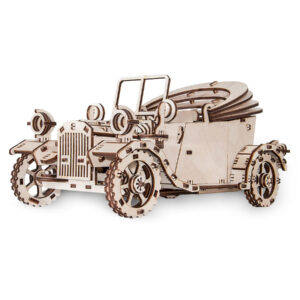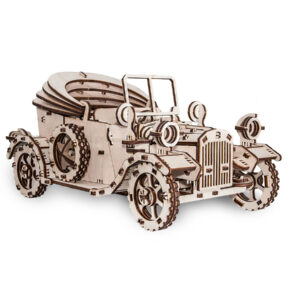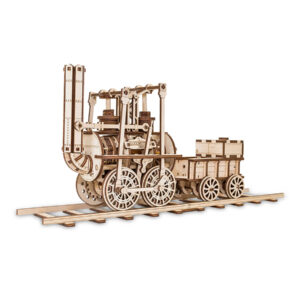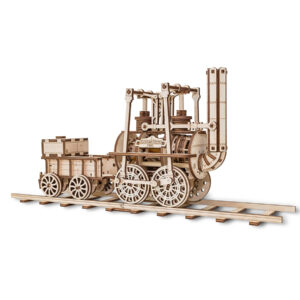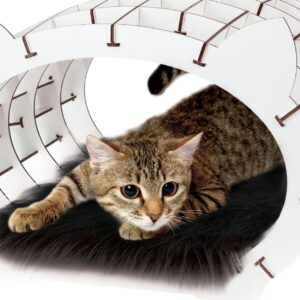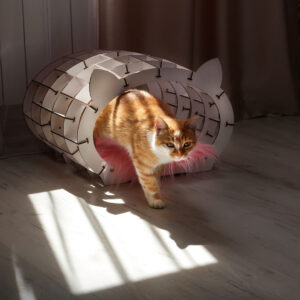Parenting
Model Building for Adults
Model Building for Adults: A Journey into the Miniature World
Modeling to build is a fascinating hobby that attracts people of all ages, but adults in particular find this activity a unique way to express their creativity, hone their manual skills, and immerse themselves in miniature worlds rich in detail and history. This pastime is not just a way to occupy leisure time, but represents a true art form that requires patience, dedication and a keen eye for detail.
In this article we will explore in depth the world of the model building for adults, analyzing the different categories, techniques, materials and challenges that this hobby presents. Whether you are a longtime enthusiast or a neophyte curious about approaching this fascinating miniature universe, you will find valuable information and practical advice for embarking on or perfecting your path in modeling.
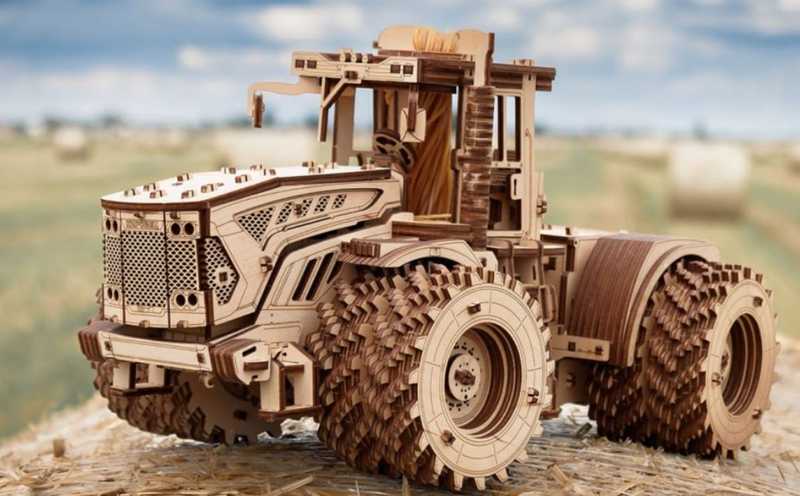
-
The Origins of Modeling
Model making has ancient roots dating back thousands of years. As early as ancient Egypt, for example, scale models of ships and buildings were found in the tombs of pharaohs. These objects often had religious or commemorative significance. Over the centuries, model making has continued to evolve, taking on various forms and purposes.
In the Renaissance, architects began using scale models to present their designs, a practice that continues today. With the advent of the Industrial Revolution in the 18th and 19th centuries, the production of toys and miniature models began to spread, setting the stage for modern model making.
The 20th century saw an explosion of model making as a hobby. The introduction of plastic as a material made model kits more affordable and easy to assemble. During and after World War II, model making of military aircraft became especially popular, with many companies beginning to produce detailed kits of famous aircraft.
Today, model building for adults is a diverse and sophisticated hobby that embraces a wide range of subjects and techniques. From reproducing historic vehicles to creating fantastical dioramas, model building offers endless possibilities for creative expression and technical challenge.
-
Main Categories of Modeling
The world of modeling is incredibly vast and diverse. Here are some of the most popular categories among adult enthusiasts:
a) Naval Modeling Model shipbuilding is one of the oldest and most fascinating forms of the hobby. Enthusiasts can choose from a wide range of subjects, from historic ships such as 18th-century vessels to modern ocean liners and warships. This category requires special attention to detail, especially in the reproduction of rigging and sails for sailing ship models.
b) Model Railroad Model railroading is not limited to the construction of miniature trains, but often includes the creation of entire landscapes and scenery. This type of model railroading makes it possible to create real miniature worlds, complete with stations, towns, and countryside traversed by railroad lines.
c) Model Aeronautics From the Wright Brothers' early aircraft to modern supersonic jets, model aviation offers a wide range of subjects. This category is especially popular among military history enthusiasts, with many modelers specializing in combat aircraft from different eras.
d) Model Automobiles Miniature cars are among the most popular subjects in model making. This category ranges from vintage cars to modern supercars and racing vehicles. Many car modelers focus on the faithful reproduction of engine and interior details.
e) Military Modeling This category includes the reproduction of military vehicles, soldiers, and battle scenarios. It is especially popular with military history enthusiasts and offers the possibility of creating detailed dioramas depicting specific historical moments.
f) Science Fiction Modeling Inspired by movies, TV series and video games, science fiction modeling allows modelers to bring spaceships, robots and alien creatures to life. This category provides ample room for creativity and personal interpretation.
g) Architectural Modeling This form of modeling focuses on the scale reproduction of buildings and architectural structures. It can range from reconstructing historical monuments to creating imaginary futuristic buildings.
-
Materials and Tools
Choosing the right materials and tools is critical to achieving quality results in modeling. Here is an overview of the main materials and tools used:
Materials:
- Plastic: This is the most common material for model kits. Lightweight, inexpensive and easy to work with, plastic comes in a variety of colors and can be easily glued and painted.
- Metal: Some high-quality kits use metal parts, often in combination with plastic. Metal offers greater durability and a more realistic appearance, but can be more difficult to work with.
- Wood: Used mainly in model shipbuilding and in some architectural patterns, wood provides a classic and natural look.
- Resin: Increasingly popular, resin makes it possible to create very fine details and is often used for special parts or entire high-quality model kits.
- Set design materials: For dioramas and railway landscapes, materials such as foam, plaster, sand, artificial grass and other miniature natural elements are used.
Tools:
- Cutters and cutters: Essential for removing parts from plastic frames and for trimming.
- Files and sandpaper: For sanding and finishing the surfaces and edges of parts.
- Tweezers: Useful for manipulating small and delicate parts.
- Glues: There are various types of glues specifically for model making, from plastic glues to glues for metal and wood.
- Brushes: Of various sizes and types, they are essential for applying colors and finishes.
- Airbrush: For professional paint application, many experienced modelers use an airbrush.
- Magnifier lamp: Useful for working on very small details.
- Masks and tape: For painting specific areas and creating complex color schemes.
-
Basic Techniques
Modeling requires learning and mastering various techniques. Here are some of the basic techniques that every modeler should know:
(a) Assembly Assembly is the heart of model making. It begins with carefully reading the instructions and identifying all parts. It is important to follow the suggested assembly sequence, as often some parts must be assembled before others to ensure a proper final fit.
Key techniques in assembly include:
- Careful removal of parts from plastic frames
- Sanding of attachment points to ensure smooth surfaces
- Precise glue application
- Correct alignment of parts during bonding
b) Surface Preparation Before painting, it is essential to properly prepare the surface of the model. This process includes:
- Removal of joint lines and imperfections with putty and sandpaper
- Washing the model to remove dust and grease residue
- Application of a primer to improve paint adhesion
(c) Painting Painting is a crucial step that can make the difference between a mediocre model and an exceptional one. Basic techniques include:
- Application of thin, even layers of paint
- Use of appropriate colors for the subject depicted
- Masking to create complex color schemes
- Use of techniques such as dry brushing to highlight details
d) Weathering Weathering is the process that gives the model a realistic, lived-in look. Basic techniques include:
- Washes with diluted colors to accentuate shadows and details
- Dry brushing to highlight edges and reliefs
- Application of rust, dirt and wear effects
(e) Decals The application of decals is often needed to add details such as signs, numbers, and symbols. This technique requires:
- Preparing the surface with a coat of gloss paint
- Dipping the decal in water and applying it to the model
- Use of specific solutions to make the decal adhere perfectly
(f) Detailing Final detailing may include:
- Addition of photoetched parts for ultra-fine details
- Creating effects such as cables, tubes or straps with wires and ribbons
- Application of pigments for dust or dirt effects
-
Advanced Techniques
As a modeler gains experience, he can experiment with more advanced techniques to take his models to the next level:
(a) Scratchbuilding Scratchbuilding is the creation of models or parts of models from scratch, using raw materials such as plastic, metal, or wood. This technique makes it possible to create unique models or add details not available in commercial kits.
(b) Conversions and Kitbashing These techniques involve modifying existing kits to create different or completely new versions of the original subject. Kitbashing, in particular, combines parts from different kits to create a unique model.
(c) Complex Dioramas The creation of elaborate dioramas requires skills in various fields, from terrain modeling to the creation of buildings and vegetation to scale. More advanced dioramas can include lighting effects and even moving elements.
d) Photoetching and Metal Parts The use of photoetched metal parts can add an extreme level of detail to models. These parts require special handling and bonding techniques.
(e) Advanced Painting Techniques Techniques such as marbling, realistic aging, and creating special effects (such as fire or smoke) require considerable skill and practice.
f) Digital Modeling With the advent of 3D printing, some modelers are exploring the creation of parts or entire models using 3D modeling software and high-resolution printers.
-
Challenges and Solutions in Modeling
Modeling, like any hobby, has its challenges. Here are some of the most common ones and how to deal with them:
(a) Time Management Challenge: Modeling requires time and patience, which can be hard to find in an adult's busy life. Solution: Schedule regular modeling sessions, even short ones. Set realistic goals and celebrate small progress.
(b) Work Space Challenge: Find a suitable space to work and store models and tools. Solution: Create a dedicated work area, even a small one. Use efficient storage systems for materials and tools.
(c) Cost Challenge: Modeling can become an expensive hobby, especially with high-quality kits and tools. Solution: Start with basic kits and tools, gradually investing in better equipment. Look for deals and consider buying used kits.
(d) Frustration and Mistakes Challenge: Mistakes are inevitable and can be frustrating. Solution: See mistakes as learning opportunities. Practice techniques on inexpensive parts or kits before tackling more complex projects.
(e) Fine Details Challenge: Working on very small details can be difficult, especially as we age. Solution: Use magnification tools such as magnifying glasses or tabletop microscopes. Make sure there is good lighting in the work area.
f) Maintaining Motivation Challenge: Long projects can lead to loss of interest or motivation. Solution: Alternate between simple and complex projects. Join modeling clubs or participate in online forums to share progress and receive encouragement.
-
Modeling as an Art Form
Modeling, in its highest forms, can be considered a true art form. Many professional modelers create works that are displayed in museums and galleries. Here are some aspects that elevate modeling to the level of art:
(a) Creative Interpretation Even when working on a prepackaged kit, the modeler has ample opportunity for creative interpretation. Choosing colors, level of weathering, adding extra details, and creating dioramas are all ways in which the modeler can express his or her artistic vision.
(b) Visual Storytelling Models, especially when presented in dioramas, can tell powerful stories. A well-crafted model can capture a historical moment, evoke emotions, or illustrate concepts in a tangible, three-dimensional way.
(c) Technical Mastery Mastery of various modeling techniques requires years of practice and dedication. The ability to reproduce
Frequently Asked Questions (FAQ)
Adult model building is a hobby that involves assembling and building scale models of various objects, such as airplanes, ships, cars, buildings, or figures. This type of model building requires precision, patience, and careful attention to detail, and is often chosen by those who enjoy manual and artistic activities.
Popular models include model airplanes, model ships, classic cars, trains, historic buildings, and figures of famous people. Some also prefer robot kits or science fiction models.
Basic tools include cutters, tweezers, sandpaper, modeling glue, brushes and paints. Some advanced modelers also use airbrushes for a more professional finish.
Model kits can be purchased in specialty stores, hobby stores, or online at sites such as Amazon, eBay, and other DIY retailers.
The time it takes to complete a model varies depending on the complexity of the kit and the time you can devote. Some models can be completed in a few hours, while others can take weeks or even months.
Many models require painting to achieve a realistic end result. Some kits include pre-painted parts, but most models require paint to be applied, often following specific color schemes to faithfully recreate the subject.
If a part is missing from your kit, it is advisable to contact the manufacturer or dealer to see if they can supply the missing part. Some manufacturers offer this service for free or for a fee.
The cost of model making can vary widely. Basic kits and essential tools can be quite inexpensive, but more detailed models and high-quality accessories can become expensive. However, you can manage your budget by choosing your kits and tools carefully.
Yes, there are many online communities and local modeling clubs where you can share your experiences, get advice, and participate in events or competitions. It is a great way to improve your skills and meet other enthusiasts.
For beginners, it is advisable to start with simple kits to become familiar with the assembly and painting processes. Follow instructions carefully, be patient, and don't hesitate to ask for advice from more experts. Also, do not be discouraged if your first attempts are not perfect; practice will improve your skills.
